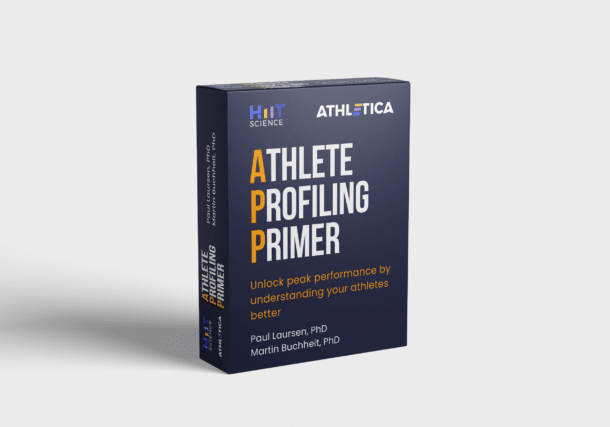Martin recently caught up with Ryan Parker of Human Kinetics to answer a number of questions that readers have about HIIT. We’ve republished the summary and video here for our HIIT Science audience.
What is HIIT?
It’s the repetition of some high-intensity intervals interspersed with lower intensity recovery periods.
Is HIIT for everyone?
HIIT can be applied to any type of population as long as it’s well programmed and managed. There is evidence that every single type of person can benefit from HIIT.
What is the difference between HIIT and ‘going hard’?
The major advantage of HIIT is that when it’s well managed and well programmed you can hit some very important physiological targets. These have performance and health benefits. The interplay of manipulation between the intensity, the duration of the intervals and the recovery that creates HIIT can be a bit complex in terms of programming, but that makes it interesting as well.
Can a gym instructor/PT prescribe HIIT or just sports scientists?
Everyone should be able to prescribe HIIT; it’s more the approach that has a scientific basis.
Should everybody hit around 90% of their VO2max when doing HIIT?
Yes, probably, but if you just say 90% of VO2max, how do you use that for prescription? No one can measure your actual VO2 during training. So we use other markers of intensity that allow us to bring people into this zone, which is 90% or above. But it’s more about using external tools and clues, such as a percentage of maximal aerobic power that would have been measured on an ergometer, maximal aerobic speed that would be measured on the treadmill or in the field. External tools and clues help us to reach the right metabolic intensity.
What are the methods to prescribe HIIT?
Maximum aerobic power and aerobic speed can be measured using ergometers. We could also prescribe HIIT using other types of tests. For example, the 30-15 intermittent fitness test, which is a field-based test that I developed a while ago, combines the ability and the evaluation of not only maximum aerobic power but because it’s performed with shuttles on the field, it evaluates the change of direction (agility) too.
How do you monitor HIIT?
There are many tools at our disposal. Described in the book. It’s also important to measure the athlete’s perception of effort.
Can you describe how HIIT can work across a variety of sports?
It is considered that HIIT can be beneficial to any type of sport, but it’s important to find the right programming for each sport. Some sports will benefit more from long intervals, some others will benefit from a shorter type of repeated sprints. That’s what the book
Science and Application of High-Intensity Interval Training is about. We explain and help people understand how to manipulate and choose the best interval for the best fit for the sport.
High-speed management is important for injury prevention, how can HIIT help?
When HIIT is designed for run-based sports we can manage and modulate the amount of high-speed running. So for players that would already have a lot of high-speed running in the legs, we can design HIIT sessions that restrict the amount of high-speed running, not to overload them, but conversely
for players that may need top-ups to catch up with what they’ve been missing while not playing. HIIT is a very good way to add and increase high speed running demands.
Is HIIT recommended to burn fat and for aesthetics?
Yes, for a long time we’ve been talking about the specific fat burning intensities which work in terms of what happens acutely. Overall HIIT is also a way to increase the overall energy expenditure. So HIIT elicits an energetic requirement that participates in creating an energy deficit.
What does the future hold for HIIT?
We are trying to develop HIIT Science further to bring the science further into practice. Along with my colleague Paul, we’ll go through more examples with new sports, so there will definitely be a second edition with new disciplines to come.

